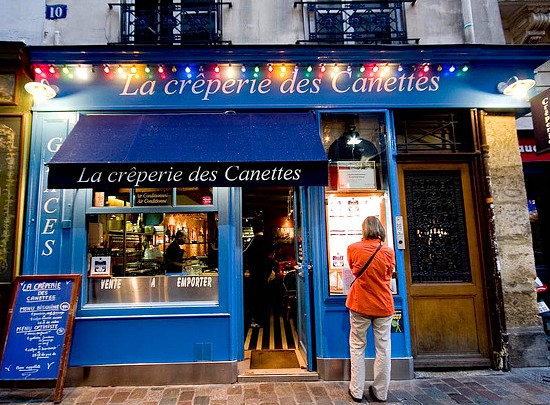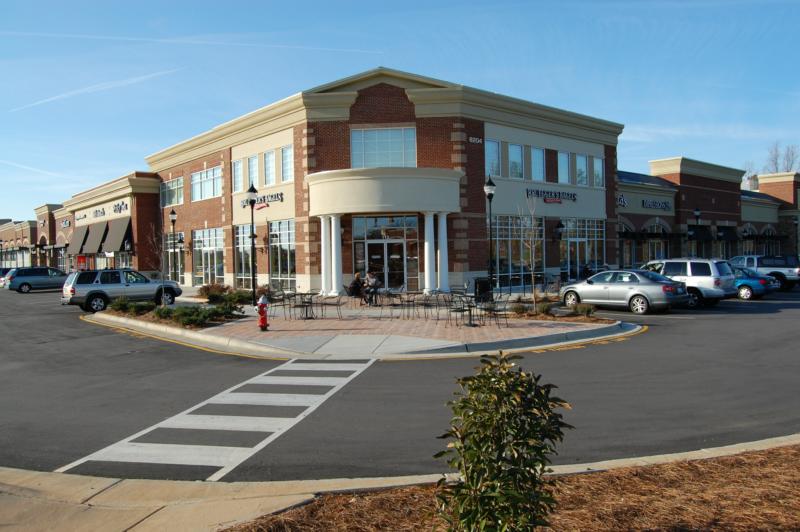-
Welcome to the WDWMAGIC.COM Forums!
Please take a look around, and feel free to sign up and join the community.
You are using an out of date browser. It may not display this or other websites correctly.
You should upgrade or use an alternative browser.
You should upgrade or use an alternative browser.
EPCOT Remy's Ratatouille Adventure coming to Epcot
- Thread starter wdwmagic
- Start date
Some painting being done to the Creperie building.
View attachment 531743
Source and more pics here:
Paint and a possible logo are really stretching the limits of the word “theming”.
Incomudro
Well-Known Member
Theming details.Paint and a possible logo are really stretching the limits of the word “theming”.
Theming details.
Paint is paint. The Everest queue is theming.
lazyboy97o
Well-Known Member
This was touched on in the Future World thread but also really applies here too. Theming is too often a synonym for stuff added onto whatever when it encompasses all aspects of design. This expansion space is poorly themed, but not because it doesn’t have a bunch of ornament or props. A sign isn’t a detail, it’s a sign. Scenic paint to create age is only a detail if it supports a story and would really go unnoticed because of its minuteness.Paint is paint. The Everest queue is theming.
Last edited:
Incomudro
Well-Known Member
France and the expansion is themed.Paint is paint. The Everest queue is theming.
Paint and signage are details on the theme.
GimpYancIent
Well-Known Member
Sure, Sure what ever. Bring on the RATS! That's the missing touch.This was touched on in the Future World thread but also really applies here too. Theming is too often a synonym for stuff added onto whatever when it encompasses all aspects of design. This expansion space is poorly themed, but not because it doesn’t have a bunch of ornament or props. A sign isn’t a detail, it’s a sign. Scenic paint to create age is only a detail if it supports a story and would really go unnoticed because of its minuteness.
lazyboy97o
Well-Known Member
No, they are not details. They are basic elements of way-finding and design. They can be part of a detail if done in a particular manner that truly expresses the story in a way that would go overlooked but reinforces the thematic ideas. Even aged paint is not really a detail when it is applied to a building that looks contemporary.France and the expansion is themed.
Paint and signage are details on the theme.
castlecake2.0
Well-Known Member
What are people expecting the Crêperie sign to look like?
SonnyEcipse
Active Member
So...what are we thinking is the expected opening date at this point? Late March? Maybe September? It has to be opening relatively soon....
FerretAfros
Well-Known Member
Off the top of my head with assistance from a quick internet search, maybe something that looks like these:What are people expecting the Crêperie sign to look like?




Instead of something that looks like it belongs here:


There are a wide variety of things that a creperie might look like, but they tend to have several things in common: they're typically small establishments, not overly fancy, and mostly serve people walking by. That means that the signs are typically rather unassuming, with simple bold lettering and limited (if any) graphics, often painted directly on the building or awning itself, and at a scale that speaks to a pedestrian environment.
Instead, we have a sign that's stuck on to the side of the building, which is distinctly rooted in (typically American) automobile-based environments, making it easier to locate when moving at high speeds. The art nouveau scrollwork is clearly French-inspired, but is too ornate for a simple establishment. The font and multi-sized lettering make it difficult to read; it's a stylized logo of a known destination, rather than one that primarily serves unplanned meals to passersby. The sign's shape is oddly reminiscent of the Federalist style, rather than anything French; similarly, the C(?) logo at the top is more reminiscent American preppy brands than European styling. Even the lamps they chose reinforce an automobile-centric design philosophy, shielding drivers eyes from direct exposure, unlike lantern-style lights that would illuminate both the sign and the sidewalk for pedestrians/diners.
This is the difference between "decorating" and "theming;" the ornamentation is inspired by France, but nothing about the sign itself actually evokes French design sensibilities. It's sort of like how Applebee's has tons of things on the wall, but it doesn't create any particular sense of place or history.
Yes, there's a lot of "stuff" on the sign; some people may call it "detail." But when the "stuff" does nothing to evoke the product as a whole, what purpose does it actually serve?
"More" doesn't always mean "better."
Movielover
Well-Known Member
Off the top of my head with assistance from a quick internet search, maybe something that looks like these:




Instead of something that looks like it belongs here:


There are a wide variety of things that a creperie might look like, but they tend to have several things in common: they're typically small establishments, not overly fancy, and mostly serve people walking by. That means that the signs are typically rather unassuming, with simple bold lettering and limited (if any) graphics, often painted directly on the building or awning itself, and at a scale that speaks to a pedestrian environment.
Instead, we have a sign that's stuck on to the side of the building, which is distinctly rooted in (typically American) automobile-based environments, making it easier to locate when moving at high speeds. The art nouveau scrollwork is clearly French-inspired, but is too ornate for a simple establishment. The font and multi-sized lettering make it difficult to read; it's a stylized logo of a known destination, rather than one that primarily serves unplanned meals to passersby. The sign's shape is oddly reminiscent of the Federalist style, rather than anything French; similarly, the C(?) logo at the top is more reminiscent American preppy brands than European styling. Even the lamps they chose reinforce an automobile-centric design philosophy, shielding drivers eyes from direct exposure, unlike lantern-style lights that would illuminate both the sign and the sidewalk for pedestrians/diners.
This is the difference between "decorating" and "theming;" the ornamentation is inspired by France, but nothing about the sign itself actually evokes French design sensibilities. It's sort of like how Applebee's has tons of things on the wall, but it doesn't create any particular sense of place or history.
Yes, there's a lot of "stuff" on the sign; some people may call it "detail." But when the "stuff" does nothing to evoke the product as a whole, what purpose does it actually serve?
"More" doesn't always mean "better."
Maybe the story is that it's a small, family owned crepe business that has been around for generations...
and they just won the lottery and decided to upsize their business by hiring a modern day American owned marketing firm to design the building...
I'm working with what I'm given here people.
castlecake2.0
Well-Known Member
I totally see what you’re saying. This is something that’s been happening across the parks for a while now, and from a CM perspective I can see why. A lot of guests get confused with signage in the parks, and whether it’s a real thing or just a facade/theming. An example that comes to mind are the new restrooms in American Adventure. If that building was built 10-15 years ago I’m sure it wouldn’t have had RESTROOMS in block letters across it, but now it does. Another example is the original Pirates of the Caribbean sign. It was simple brass lettering on the front of the building, now it’s a massive ship sail out front with a skeleton on top. When I worked the tip board at the end of Main Street the most common question was “where’s the rides?”. Things were almost themed TOO well, and it confuses a lot of people. I’m not saying that means we should dumb down the product we offer, but this could be a reason why the sign is designed the way it is. It also might be by request of the third party operator thats funding this venue as they want their product to be visible. Again, none of these are excuses, just thoughts. I appreciate you showing some examples though, they definitely use that as inspiration! Would be cool if the side was done in that kind of style, whit the the front being a little more “cleaned up”.Off the top of my head with assistance from a quick internet search, maybe something that looks like these:




Instead of something that looks like it belongs here:


There are a wide variety of things that a creperie might look like, but they tend to have several things in common: they're typically small establishments, not overly fancy, and mostly serve people walking by. That means that the signs are typically rather unassuming, with simple bold lettering and limited (if any) graphics, often painted directly on the building or awning itself, and at a scale that speaks to a pedestrian environment.
Instead, we have a sign that's stuck on to the side of the building, which is distinctly rooted in (typically American) automobile-based environments, making it easier to locate when moving at high speeds. The art nouveau scrollwork is clearly French-inspired, but is too ornate for a simple establishment. The font and multi-sized lettering make it difficult to read; it's a stylized logo of a known destination, rather than one that primarily serves unplanned meals to passersby. The sign's shape is oddly reminiscent of the Federalist style, rather than anything French; similarly, the C(?) logo at the top is more reminiscent American preppy brands than European styling. Even the lamps they chose reinforce an automobile-centric design philosophy, shielding drivers eyes from direct exposure, unlike lantern-style lights that would illuminate both the sign and the sidewalk for pedestrians/diners.
This is the difference between "decorating" and "theming;" the ornamentation is inspired by France, but nothing about the sign itself actually evokes French design sensibilities. It's sort of like how Applebee's has tons of things on the wall, but it doesn't create any particular sense of place or history.
Yes, there's a lot of "stuff" on the sign; some people may call it "detail." But when the "stuff" does nothing to evoke the product as a whole, what purpose does it actually serve?
"More" doesn't always mean "better."
castlecake2.0
Well-Known Member
Did it replace something else or was it just going to be landscaping?I’m pretty sure I mentioned the eaterie was a very very late addition. I want to say it wasn’t completely designed by Burbank and had quite a bit of local input but I can’t verify it.
Empty space IIRC. Was a few years back now.Did it replace something else or was it just going to be landscaping?
lazyboy97o
Well-Known Member
The restrooms were in the crêperie’s location before it was added to the project.Did it replace something else or was it just going to be landscaping?
Stroller parking originally, then restrooms.The restrooms were in the crêperie’s location before it was added to the project.
lazyboy97o
Well-Known Member
Stroller parking was adjacent to the restrooms between them and the exterior queue. The restrooms are code required so they’ve always been part of the expansion space.Stroller parking originally, then restrooms.
Register on WDWMAGIC. This sidebar will go away, and you'll see fewer ads.
